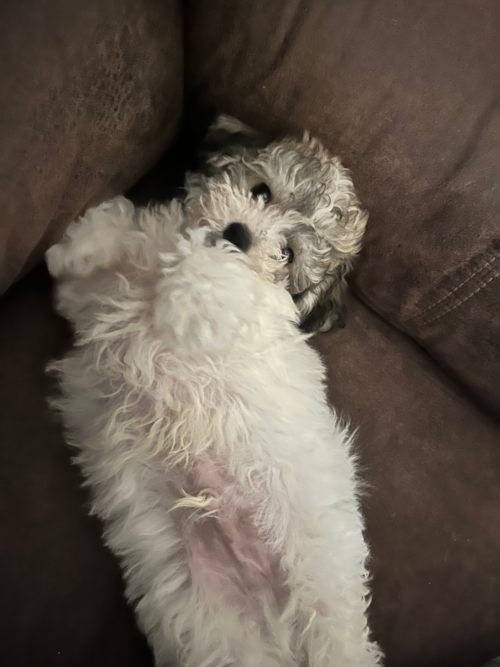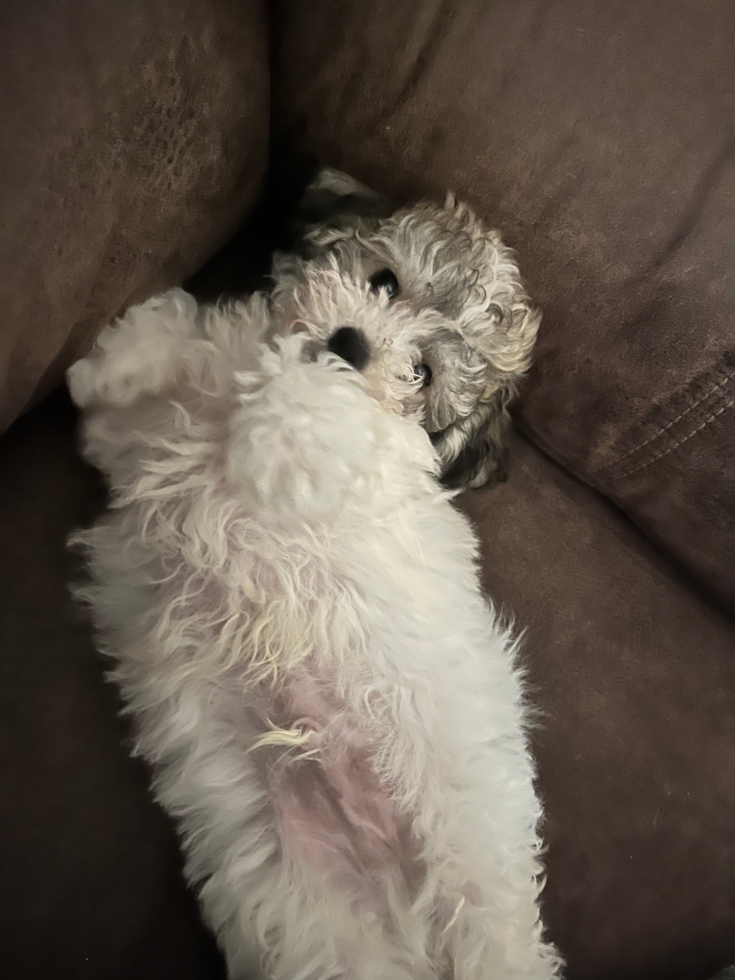Havachon Breed Information
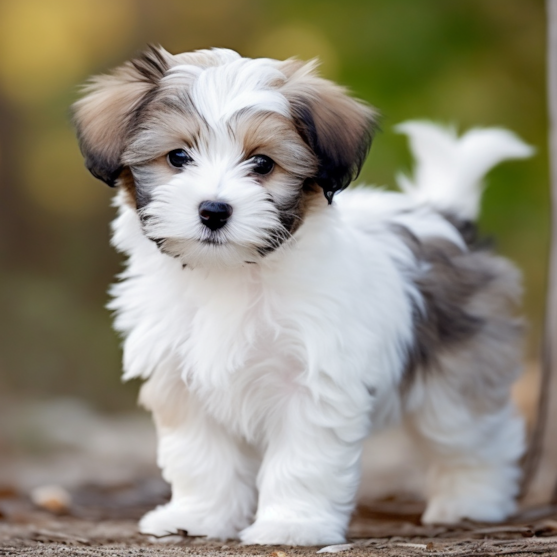
Reserve a Havachon puppy from Puppy Love PR! Havachons are sweet-natured, sassy, and playful pups that love companionship. This designer breed is a cross between a Havanese and a Bichon Frise that creates a wonderful and affectionate companion. They can be trained to participate in canine sports, games, and physical activities, as well as long walks on the beach or playing at the park. This happy little pooch has unconditional love for its owner and enjoys cuddles as well as entertaining at home.
Characteristics
- The Havachon is a small dog with a happy, cheerful disposition
- They are intelligent, gentle dogs that make excellent family pets
- These dogs are great watchdogs, but they are not aggressive. They are naturally friendly and affectionate towards people and other animals
- The Havachon enjoys spending time with their family members and will often follow them around the house or yard
- This breed makes an excellent companion for children because they are patient and gentle with them
- The Havachon has a hypoallergenic coat. This makes them ideal for people who suffer from allergies or asthma because they do not aggravate these conditions like other breeds might do
- This breed can adapt to any living situation but does require exercise in order to stay healthy and happy
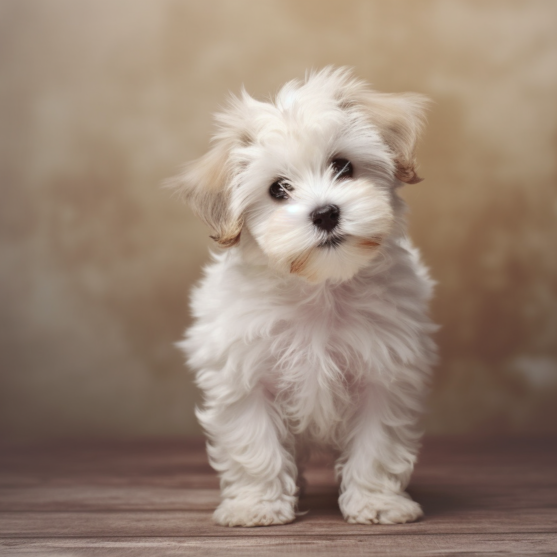
Appearance
Havachons are an adorable-looking designer breed that was created to be a beautiful combination of its parents. These cuties are petite and have the most stunning features of their parents. They always appear happy and are very expressive.
The Havachon has round and expressive eyes, which are small and black. Their nose is also small, but it may have some folds at the tip. They have a fluffy and curled tail that is usually carried high over their body or slightly down at the backside when relaxed, or excitedly wagging when happy or playful.
They have a straight to curly, silky coat that comes in a variety of colors including white, black, tan, cream, gray, silver, golden brown, or blue depending on which parent breed’s coat they take after more. Their size is usually small-to-toy, often weighing between 9 and 17 pounds. They typically reach a height of 9 to 15 inches as adults.
Photos
Temperament
The Havachon temperament is sweet, sassy, and cheerful. They love to entertain. They enjoy roaming on a field or exploring new territories. They are also known to be sociable with both people and other animals.
They are known to be good family pets as they crave attention from their owners and are quite generous in affection. They have a high energy level and can be very active indoors or outdoors depending on the weather conditions of the day. If you have children, the Havachon will make an excellent playmate for them too.
This sweet, happy little guy enjoys long walks and runs, playing with other dogs, snuggling on the couch or at the foot of your bed, and getting lots of love. They are always up for watching TV or cuddling with you on the sofa too.
Care
Grooming
The Havachon is a small-sized dog with a soft and gorgeous coat. Their coat is shiny and dense. This breed comes in a variety of colors including black, white, brown, gray, and brindle. They have moderate grooming needs.
The Havachon should be brushed every week to keep their coat looking beautiful. If your dog has long hair, then you may need to brush it more frequently. When brushing their coat, make sure not to brush too hard or you could cause damage to their skin.
You should also trim their nails once a month or as needed. You can use a nail clipper designed for dogs. Make sure that you clip the nails straight across so that they do not curl under when walking on hard surfaces such as concrete or tile floors.
Bathe them when needed. Bathe with mild shampoo and rinse thoroughly. It is recommended to not use a hair conditioner every time you bathe your pet. It will strip essential oils from the skin and coat, which can cause dryness and irritation. Towel dry after bathing your Havachon or blow dry their coat.
Exercise Needs
Havachon dogs are energetic and love to play. They need to be given at least a walk every day, for at least 30 to 40 minutes. The walks should be long enough so that they can run around and burn off some of their energy.
The Havachon is not a breed that needs hours and hours of exercise every day, but they do need regular opportunities to stretch their legs and run around freely outdoors. They can also be exercised indoors with toys and games designed for smaller dogs. These games will provide mental stimulation for the dog as well as physical activity.
Health
When a Havanese and a Bichon Frise are crossed, they produce a healthy crossbreed of Havachons. They are a no-risk group for small breeds and don't typically have many health problems. Some conditions that may affect small breeds are dental issues, ear infections, and allergies. They might also suffer eye diseases that are common, especially during old age.
Lifespan
The Havachon has an average lifespan of 12 to 15 years. The breed’s lifespan is determined by many aspects such as genetics, health, diet, lifestyle, and environment in which they are raised. It is possible to increase a dog's lifespan by making sure they receive regular check-ups at the vet and are raised in a loving environment.
Training
Havachon dogs are known to be smart, eager to learn, and easy to train. They also have a natural desire to please their owners. These traits make them ideal candidates for many types of dog training programs.
Havachon owners should start their puppies off early with socialization training. This involves exposing your puppy to as many different people, animals, noises, and situations as possible so that they will grow up to be well-adjusted and confident. Socialization training typically begins at about 8 weeks of age but can continue into adolescence if necessary.
They don't like being left alone for long periods of time and may suffer from separation anxiety. Separation anxiety can be reduced by keeping your Havachon well-exercised before leaving them alone and by making sure they have plenty of toys or chew bones around when you're gone so they will have something else to focus on.
Positive reinforcement is a method of training that uses rewards to encourage the dog to perform a behavior. The reward can be food, praise, toys, or a combination of these things. Positive reinforcement is most often used during training because it's an effective way to teach your dog new behaviors. Whenever your dog does something you like, you will reward them with a treat or toy. Eventually, they will learn that doing what you want means getting rewarded with something they like. When first teaching a new behavior, use lots of treats and praise to help your dog learn what you want from them as quickly as possible.
History
The Havachon is a cross between the Havanese and Bichon Frise, two breeds that have become increasingly popular in recent years. Havachon puppies were first created in the 1990s by breeders who were looking to make a new small, hypoallergenic dog breed that had the same temperament as and gorgeous looks as both parent breeds. The result was an adorable little dog that is now one of the most popular designer breeds in the United States.
The Havanese originated from Cuba and were introduced to Europe by Spanish sailors. These dogs were popular with Europeans because they were easy to train, small enough for city living (about ten pounds), and extremely friendly with people. They became popular pets for European nobility as well as for commoners during this time period.
The Bichon Frise originated in Southern France and was used as a lapdog by French nobility. Later, when French explorers brought these dogs back from their travels around the world, they became popular pets among all classes of people in France. They eventually spread across Europe and later into North America as well as other parts of the world where they remain quite popular today.


